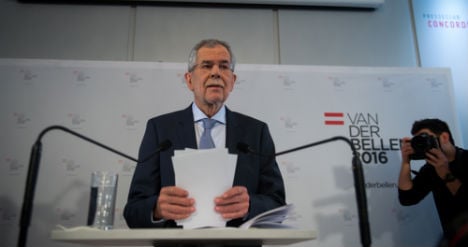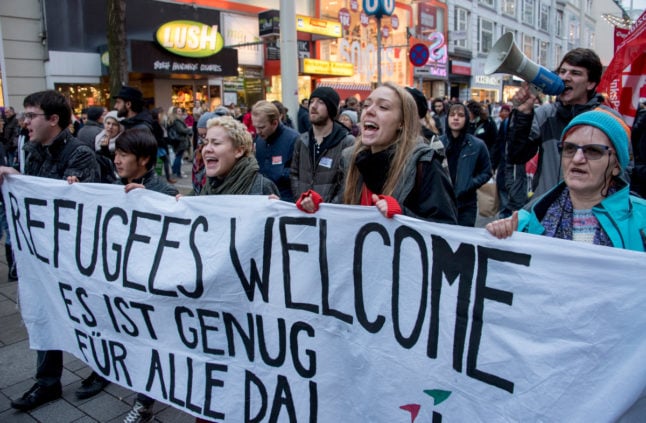Should one of the three win, it would be the first time since 1945 that the president did not come from one of the two major parties. Although the role is largely symbolic, the vote is nevertheless a key indicator of the parties' standing.
The ruling coalition, made up of the Social Democrats (SPÖ) and the conservative ÖVP, has come under pressure over the last year, showing cracks as Europe grapples with its worst migration crisis since World War II, with support surging for the far-right Freedom Party (FPÖ).
Leading the pack ahead of Sunday's race is the ex-leader of the Green party, Alexander van der Bellen, who is projected to reap up to 26 percent of the vote, according to two surveys released Monday by newspapers Kurier and Oesterreich.
But the 72-year-old, who is running as an independent with Green backing, faces a strong rival in the FPÖ's Norbert Hofer, 44, who is now in second place with 24 percent.
Following closely on the heels of both men is the election's only female contender Irmgard Griss, another independent candidate and former Supreme Court president who is seen taking between 20 and 21 percent.
But the ruling parties' candidates are lagging behind. SPÖ's Rudolf Hundstorfer hovers around the 15-percent mark, while the conservative Andreas Khol – who recently sparked controversy by describing Austria as a “victim of National Socialism” – is seen taking just 11 percent.
Based on the latest polls, neither of them will make it past the first round, dashing their hopes of taking over from the incumbent Heinz Fischer, a Social Democrat.
The migration crisis has been a dominant theme in the campaign, with Austria last year taking in one of the EU's highest numbers of asylum-seekers on a pro-capita basis.
Last October, the FPÖ scored its best-ever election showing in Vienna – a SPÖ bastion since the end of World War II – coming second with 32.3 percent.
Some 6.3 million Austrians are eligible to vote in the election. A run-off vote will take place on May 22 if no candidate manages to obtain an absolute majority.



 Please whitelist us to continue reading.
Please whitelist us to continue reading.
Member comments